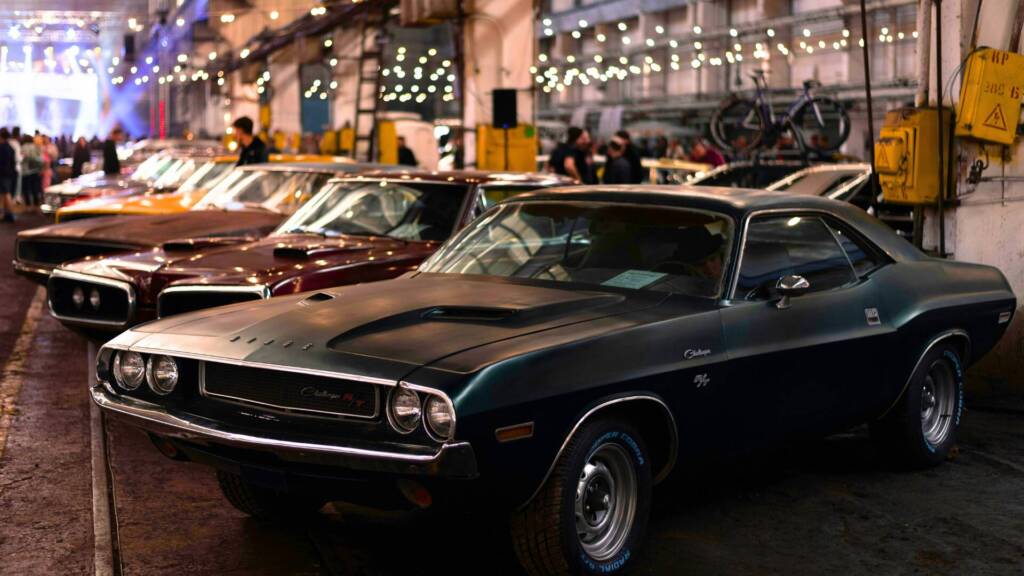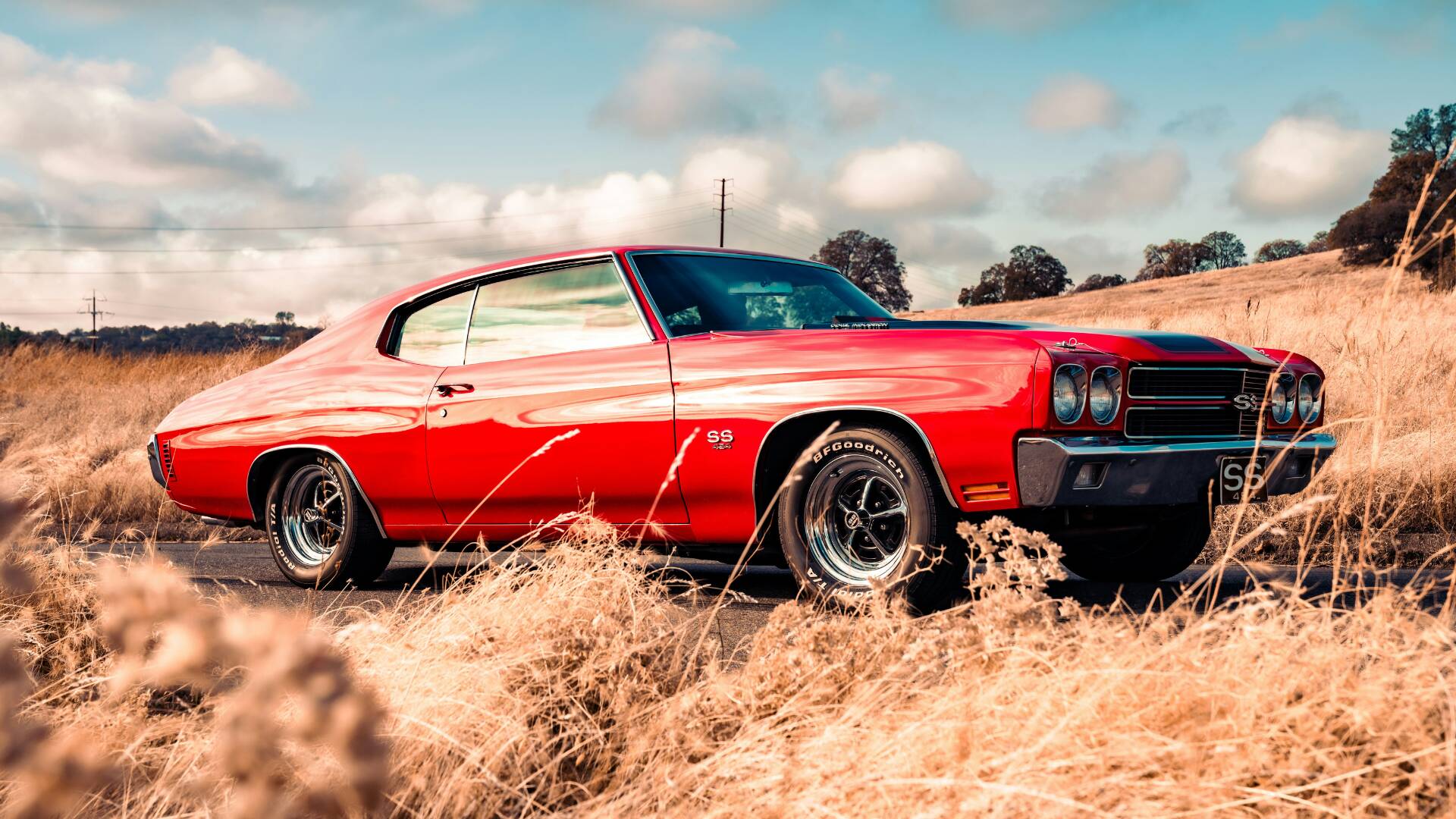The unmistakable rumble of a V8 engine. The glint of chrome under the sun. The primal grin when torque pins you back in your seat. This is the magic of American muscle. In this journey through muscle car history, we’ll explore how these iconic machines roared onto the scene in the 1960s, struggled through regulation and reinvention, and have now emerged in the 21st century more powerful—and more diverse—than ever.
The Golden Era: 1960s–Early 1970s

The late 1950s and early ’60s set the stage for the muscle car boom. As the nation climbed out of the Eisenhower recession, prosperity returned—and with it, a new automotive culture emerged. Widespread two-car households, low gas prices, and affordable vehicles gave automakers a ripe environment to introduce something bold.
The V8 engine was at the heart of it all. With the rise of high-compression ratios, improved fuel blends, and the introduction of the 4-barrel carburetor, performance skyrocketed. These mechanical upgrades translated into pure, visceral driving pleasure. And for the average American, it was all within reach.
But muscle wasn’t just under the hood—it was in the culture. From teenage rebellion to the silver screen, these cars symbolized freedom and American ingenuity. Think Bullitt’s high-octane car chase through San Francisco. The bond between human and machine had never been more intense.
Manufacturers weren’t just competing—they were battling for dominance on the dragstrip and in the showroom. Below is a sample chart of standout models from this era:
| Make | Model | Largest Engine (cu in) | Horsepower (hp) |
| Chevrolet | Chevelle SS | 454 | 450 |
| Plymouth | Road Runner | 426 HEMI | 425 |
| Ford | Mustang Boss 429 | 429 | 375 |
| Dodge | Charger R/T | 440 Magnum | 375 |
| Pontiac | GTO Judge | 400 Ram Air IV | 370 |
The horsepower wars ignited a golden age of performance. Chevy, Ford, Dodge, Pontiac—each sought to out-muscle the others, giving us some of the most legendary vehicles in automotive history.
Iconic Models
- Chevy Chevelle SS: The Chevelle SS started out as a performance upgrade but by 1970, it became an unstoppable force. The LS6 version—rated at 450 hp—was among the most powerful factory muscle cars ever built during that time. The styling was clean but aggressive, and its reputation as a street and strip monster gave it enduring appeal.
- Plymouth Road Runner: Designed for performance on a budget, the Road Runner stripped away unnecessary features and focused on raw speed. Named after the cartoon bird, it even featured a working “beep-beep” horn. It was a sales hit, thanks to its affordable price and serious power.
- Dodge Challenger: Late to the pony car party, Dodge made up for it with attitude. The Challenger had the widest range of powertrains in the industry, from slant-6 to big-block monsters. It shared a platform with the Plymouth Barracuda but offered more luxury and presence. The R/T and T/A models were particularly bold.
The Decline: Mid-1970s–1980s
The 1973 oil embargo hit the muscle car world like a knockout punch. Fuel prices spiked. Gasoline rationing lines formed. Simultaneously, the U.S. government began enforcing stricter emissions standards and safety regulations.
Foreign automakers—producing smaller, more efficient cars—gained traction. Consumers moved toward Japanese imports, which were cheaper to own and easier to maintain.
With performance on the backburner, the once-mighty muscle cars shrank in both size and output. The infamous Mustang II is often cited as a low point—a rebadged Pinto that bore little resemblance to the performance cars of the previous decade. Power ratings plummeted, and muscle cars became shadows of their former selves.
The Resurgence: 1990s–2000s
By the 1990s, muscle cars began regaining their form. Models like the Mustang GT, Camaro Z28, and Firebird Trans Am marked a rebirth of American performance. Horsepower climbed again, handling improved, and enthusiasts rejoiced.
These modern machines retained key stylistic elements—bold grilles, fastback silhouettes, rear-wheel drive—but added features unheard of in the ’60s. Electronic fuel injection, independent rear suspension, and ABS brakes turned classic muscle into refined performance machines. They honored the past while embracing the present.
Today’s Muscle: 2010s–2025

We now live in a golden era of capability. Today’s muscle cars are not only fast—they’re smart. Launch control, track modes, magnetic ride suspension, and supercharged V8s push boundaries. The 5.0-liter Mustang GT, Dodge Challenger Hellcat, and Chevrolet Camaro SS deliver outrageous power and control.
What’s more? Despite EV trends, V8s are still hanging on. Consumers—and collectors—are not ready to say goodbye to that unmistakable rumble just yet.
Still, the winds are changing and there’s a shift in power. The Mustang Mach-E introduced the idea of electric muscle, and Dodge has followed with an EV Charger variant. Whether enthusiasts will accept silence over roar remains to be seen—but the muscle car legacy is clearly evolving.
Ready to Ride Through Time? Join the Muscle Car Legacy Today!
Muscle cars remain one of the most cherished categories in the collector world. Vehicles from the 1950s to 1970s still dominate top-tier auctions, thanks to their styling, mechanical simplicity, and cultural significance.
Thanks to the collector car community, from West Coast muscle enthusiasts to national groups like the AACA, these legends continue to thunder down our roads. Their commitment ensures that muscle car history is still being written—one rumble at a time.
At Woodside Credit, we understand the passion behind these machines. Our muscle car financing makes it an easy choice regardless of how you buy. Start with a quick quote to estimate the payment on your next muscle car.
Please note, Woodside Credit does not finance Raptor, TRX, or newer Dodge Challenger or Charger models, including Hellcat.


